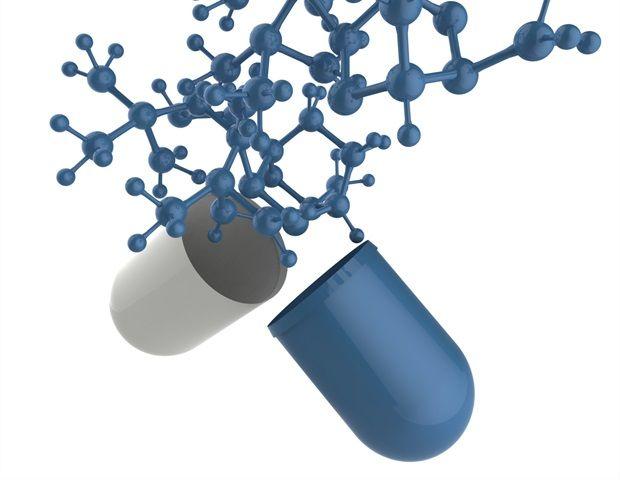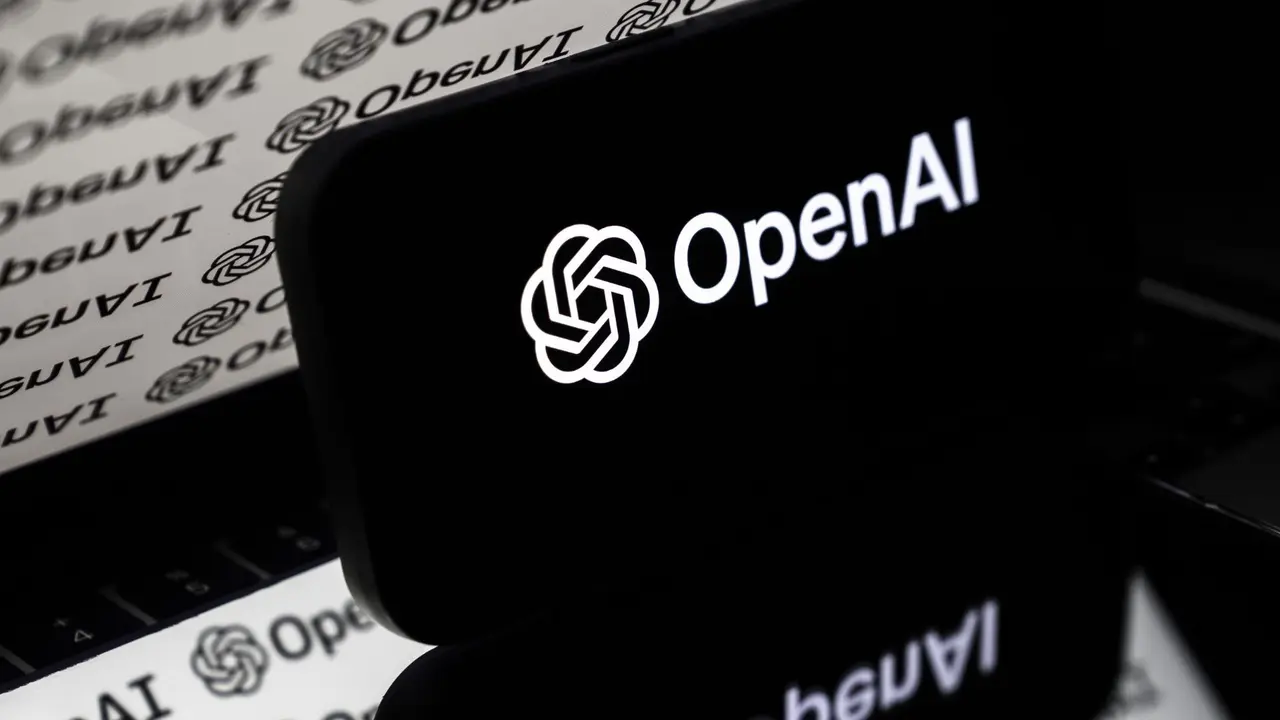AI Accelerates Antibiotic Discovery: New Drug Targets IBD with Unprecedented Precision
3 Sources
3 Sources
[1]
AI serves as a tool to fight drug resistance and accelerate new antibiotic development
McMaster UniversityOct 3 2025 Researchers at McMaster University and the Massachusetts Institute of Technology (MIT) have made two scientific breakthroughs at once: they not only discovered a brand-new antibiotic that targets inflammatory bowel diseases (IBD), but also successfully used a new type of AI to predict exactly how the drug works. To their knowledge, this a global first for the AI. Detailed on October 3, 2025 in the journal Nature Microbiology, the discovery unveils a promising new treatment option for millions of people affected by Crohn's disease and other related conditions, while also showcasing important new applications for AI in drug discovery research. "This work shows that we're still just scratching the surface as far as AI-guided drug discovery goes," says Jon Stokes, an assistant professor in McMaster's Department of Biochemistry and Biomedical Sciences and principal investigator on the new study. The development of our new drug, which is designed to target IBD, has been fast-tracked thanks to the collaboration between humans and generative AI." Jon Stokes, Department of Biochemistry and Biomedical Sciences, McMaster University An antibiotic for IBD Most antibiotics used in clinics today are "broad-spectrum" drugs, meaning they wipe out good bacteria in addition to those that cause disease - "they're nukes," Stokes explains. This can create opportunities for invasive and drug-resistant species of bacteria, like E. coli, to move in and colonize the intestines, which can exacerbate conditions like Crohn's. But enterololin, the new antibiotic discovered at McMaster, is a "narrow-spectrum" drug, meaning it spares the microbiome and attacks only a specific group of disease-causing bugs - in this case, a family of bacteria called Enterobacteriaceae, which happens to include E. coli. This means it not only kills E. coli, but also reduces the opportunity for drug-resistant strains to colonize the gut in the first place. "This new drug is a really promising treatment candidate for the millions of patients living with IBD," Stokes says. "We currently have no cure for these conditions, so developing something that might meaningfully alleviate symptoms could help people experience a much higher quality of life." How do drugs work? Just ask AI To date, AI has been leveraged as a tool for predicting which molecules might have therapeutic potential, but this study used it to describe what researchers call "mechanism of action" (MOA) - or how drugs attack disease. "AI has expedited the rate at which we can explore chemical space for new drug candidates, but, until now, it has done little to alleviate a major bottleneck in drug development, which is understanding what these new drug candidates actually do," explains Stokes. MOA studies, he says, are essential for drug development. They help scientists confirm safety, optimize dosage, make modifications to improve efficacy, and sometimes even uncover entirely new drug targets. They also help regulators determine whether or not a given drug candidate is suitable for use in humans. But they're also notoriously expensive - and slow. Stokes says a thorough MOA study can take up to two years and cost around $2 million; however, using AI, his group did enterololin's in just six months and for just $60,000. Indeed, after his lab's discovery of the new antibiotic, Stokes connected with colleagues at MIT's Computer Science and Artificial Intelligence Lab (CSAIL) to see if any of their emerging machine learning platforms could help fast-track his upcoming MOA studies. In just 100 seconds, he was given a prediction: his new drug attacked a microscopic protein complex called LolCDE, which is essential to the survival of certain bacteria. "A lot of AI use in drug discovery has been about searching chemical space, identifying new molecules that might be active," says Regina Barzilay, a professor in MIT's School of Engineering and the developer of DiffDock, the AI model that made the prediction. "What we're showing here is that AI can also provide mechanistic explanations, which are critical for moving a molecule through the development pipeline." Barzilay was recently listed among Time Magazine's most influential people in AI. Stokes stresses that while the prediction was intriguing, it was just that - a prediction. He would still have to conduct traditional MOA studies in the lab. "Currently, we can't just assume that these AI models are totally right, but the notion that it could be right took the guesswork out of our next steps," explains Stokes, a member of the Michael G. DeGroote Institute for Infectious Disease Research at McMaster. And so his team, led in large part by McMaster graduate student Denise Catacutan, began investigating enterololin's MOA, using MIT's prediction as a starting point. Within just a few months, it became clear that the AI was in fact right. "We did all of our standard MOA workup to validate the prediction - to see if the experiments would back-up the AI, and they did," says Catacutan, a PhD candidate in the Stokes Lab. "Doing it this way shaved a year-and-a-half off of our normal timeline." With this, Stokes has now successfully used AI to discover viable drug candidates, to fast-track global drug discovery efforts, and to determine how new drugs work. But, ask him, and he'll tell you that - beneficial as it is - AI is merely a means to an end. "Drug resistance and our lack of new drugs is a leaky faucet," he says. "You can leave it be for a while, but you're eventually going to have a big problem. AI is my wrench - it's a tool for fixing the leak before it becomes a flood, and that's really it. My sole focus is on getting new drugs to the patients who need them, and as long as AI can help me do that, then I'll continue to find new ways to use it." The pathway to patients Stokes' spin-out company, Stoked Bio, has already licensed enterololin from McMaster and is currently optimizing it for human use. The company is also testing modified versions of the new antibiotic against other drug-resistant bacteria, like Klebsiella, and early results are promising. "The identification of enterololin underscores the remarkable science emerging at McMaster," says Jeff Skinner, CEO at Stoked Bio. "We are proud to partner with the university on translating this breakthrough into real therapies for patients." If all goes well, Stokes says that the new drug will be ready for human trials within three years - a timeline his research team is eager to meet. "Working on something translational like this is surreal," says Catacutan. "The fact that something we discovered in the lab may someday help patients is truly amazing, and really reinforces the significance of our work." McMaster University Journal reference: Catacutan, D. B., et al. (2025) Discovery and artificial intelligence-guided mechanistic elucidation of a narrow-spectrum antibiotic. Nature Microbiology. doi.org/10.1038/s41564-025-02142-0.
[2]
Novel antibiotic targets IBD -- and AI predicted how it would work before scientists could prove it
Researchers at McMaster University and the Massachusetts Institute of Technology (MIT) have made two scientific breakthroughs at once: they not only discovered a brand-new antibiotic that targets inflammatory bowel diseases (IBD), but also successfully used a new type of AI to predict exactly how the drug works. To their knowledge, this is a global first for the AI. Detailed in the journal Nature Microbiology, the discovery unveils a promising new treatment option for millions of people affected by Crohn's disease and other related conditions, while also showcasing important new applications for AI in drug discovery research. "This work shows that we're still just scratching the surface as far as AI-guided drug discovery goes," says Jon Stokes, an assistant professor in McMaster's Department of Biochemistry and Biomedical Sciences and principal investigator on the new study. "The development of our new drug, which is designed to target IBD, has been fast-tracked thanks to the collaboration between humans and generative AI." An antibiotic for IBD Most antibiotics used in clinics today are "broad-spectrum" drugs, meaning they wipe out good bacteria in addition to those that cause disease -- "they're nukes," Stokes explains. This can create opportunities for invasive and drug-resistant species of bacteria, like E. coli, to move in and colonize the intestines, which can exacerbate conditions like Crohn's. But enterololin, the new antibiotic discovered at McMaster, is a "narrow-spectrum" drug, meaning it spares the microbiome and attacks only a specific group of disease-causing bugs -- in this case, a family of bacteria called Enterobacteriaceae, which happens to include E. coli. This means it not only kills E. coli, but also reduces the opportunity for drug-resistant strains to colonize the gut in the first place. "This new drug is a really promising treatment candidate for the millions of patients living with IBD," Stokes says. "We currently have no cure for these conditions, so developing something that might meaningfully alleviate symptoms could help people experience a much higher quality of life." How do drugs work? Just ask AI To date, AI has been leveraged as a tool for predicting which molecules might have therapeutic potential, but this study used it to describe what researchers call "mechanism of action" (MOA) -- or how drugs attack disease. "AI has expedited the rate at which we can explore chemical space for new drug candidates, but, until now, it has done little to alleviate a major bottleneck in drug development, which is understanding what these new drug candidates actually do," explains Stokes. MOA studies, he says, are essential for drug development. They help scientists confirm safety, optimize dosage, make modifications to improve efficacy, and sometimes even uncover entirely new drug targets. They also help regulators determine whether or not a given drug candidate is suitable for use in humans. But they're also notoriously expensive -- and slow. Stokes says a thorough MOA study can take up to two years and cost around $2 million; however, using AI, his group did enterololin's in just six months and for just $60,000. Indeed, after his lab's discovery of the new antibiotic, Stokes connected with colleagues at MIT's Computer Science and Artificial Intelligence Lab (CSAIL) to see if any of their emerging machine learning platforms could help fast-track his upcoming MOA studies. In just 100 seconds, he was given a prediction: his new drug attacked a microscopic protein complex called LolCDE, which is essential to the survival of certain bacteria. "A lot of AI use in drug discovery has been about searching chemical space, identifying new molecules that might be active," says Regina Barzilay, a professor in MIT's School of Engineering and the developer of DiffDock, the AI model that made the prediction. "What we're showing here is that AI can also provide mechanistic explanations, which are critical for moving a molecule through the development pipeline." Barzilay was recently listed among Time Magazine's most influential people in AI. Stokes stresses that while the prediction was intriguing, it was just that -- a prediction. He would still have to conduct traditional MOA studies in the lab. "Currently, we can't just assume that these AI models are totally right, but the notion that it could be right took the guesswork out of our next steps," explains Stokes, a member of the Michael G. DeGroote Institute for Infectious Disease Research at McMaster. And so his team, led in large part by McMaster graduate student Denise Catacutan, began investigating enterololin's MOA, using MIT's prediction as a starting point. Within just a few months, it became clear that the AI was in fact right. "We did all of our standard MOA workup to validate the prediction -- to see if the experiments would back-up the AI, and they did," says Catacutan, a Ph.D. candidate in the Stokes Lab. "Doing it this way shaved a year-and-a-half off of our normal timeline." With this, Stokes has now successfully used AI to discover viable drug candidates, to fast-track global drug discovery efforts, and to determine how new drugs work. But, ask him, and he'll tell you that -- beneficial as it is -- AI is merely a means to an end. "Drug resistance and our lack of new drugs is a leaky faucet," he says. "You can leave it be for a while, but you're eventually going to have a big problem. AI is my wrench -- it's a tool for fixing the leak before it becomes a flood, and that's really it. My sole focus is on getting new drugs to the patients who need them, and as long as AI can help me do that, then I'll continue to find new ways to use it." The pathway to patients Stokes' spin-out company, Stoked Bio, has already licensed enterololin from McMaster and is currently optimizing it for human use. The company is also testing modified versions of the new antibiotic against other drug-resistant bacteria, like Klebsiella, and early results are promising. "The identification of enterololin underscores the remarkable science emerging at McMaster," says Jeff Skinner, CEO at Stoked Bio. "We are proud to partner with the university on translating this breakthrough into real therapies for patients." If all goes well, Stokes says that the new drug will be ready for human trials within three years -- a timeline his research team is eager to meet. "Working on something translational like this is surreal," says Catacutan. "The fact that something we discovered in the lab may someday help patients is truly amazing, and really reinforces the significance of our work."
[3]
New Antibiotic Targets IBD -- and AI Predicted How It Would Work Before Scientists Could Prove It | Newswise
Newswise -- HAMILTON, ONT -- Researchers at McMaster University and the Massachusetts Institute of Technology (MIT) have made two scientific breakthroughs at once: they not only discovered a brand-new antibiotic that targets inflammatory bowel diseases (IBD), but also successfully used a new type of AI to predict exactly how the drug works. To their knowledge, this a global first for the AI. Detailed on October 3, 2025 in the journal Nature Microbiology, the discovery unveils a promising new treatment option for millions of people affected by Crohn's disease and other related conditions, while also showcasing important new applications for AI in drug discovery research. "This work shows that we're still just scratching the surface as far as AI-guided drug discovery goes," says Jon Stokes, an assistant professor in McMaster's Department of Biochemistry and Biomedical Sciences and principal investigator on the new study. "The development of our new drug, which is designed to target IBD, has been fast-tracked thanks to the collaboration between humans and generative AI." Most antibiotics used in clinics today are "broad-spectrum" drugs, meaning they wipe out good bacteria in addition to those that cause disease -- "they're nukes," Stokes explains. This can create opportunities for invasive and drug-resistant species of bacteria, like E. coli, to move in and colonize the intestines, which can exacerbate conditions like Crohn's. But enterololin, the new antibiotic discovered at McMaster, is a "narrow-spectrum" drug, meaning it spares the microbiome and attacks only a specific group of disease-causing bugs -- in this case, a family of bacteria called Enterobacteriaceae, which happens to include E. coli. This means it not only kills E. coli, but also reduces the opportunity for drug-resistant strains to colonize the gut in the first place. "This new drug is a really promising treatment candidate for the millions of patients living with IBD," Stokes says. "We currently have no cure for these conditions, so developing something that might meaningfully alleviate symptoms could help people experience a much higher quality of life." To date, AI has been leveraged as a tool for predicting which molecules might have therapeutic potential, but this study used it to describe what researchers call "mechanism of action" (MOA) -- or how drugs attack disease. "AI has expedited the rate at which we can explore chemical space for new drug candidates, but, until now, it has done little to alleviate a major bottleneck in drug development, which is understanding what these new drug candidates actually do," explains Stokes. MOA studies, he says, are essential for drug development. They help scientists confirm safety, optimize dosage, make modifications to improve efficacy, and sometimes even uncover entirely new drug targets. They also help regulators determine whether or not a given drug candidate is suitable for use in humans. But they're also notoriously expensive -- and slow. Stokes says a thorough MOA study can take up to two years and cost around $2 million; however, using AI, his group did enterololin's in just six months and for just $60,000. Indeed, after his lab's discovery of the new antibiotic, Stokes connected with colleagues at MIT's Computer Science and Artificial Intelligence Lab (CSAIL) to see if any of their emerging machine learning platforms could help fast-track his upcoming MOA studies. In just 100 seconds, he was given a prediction: his new drug attacked a microscopic protein complex called LolCDE, which is essential to the survival of certain bacteria. "A lot of AI use in drug discovery has been about searching chemical space, identifying new molecules that might be active," says Regina Barzilay, a professor in MIT's School of Engineering and the developer of DiffDock, the AI model that made the prediction. "What we're showing here is that AI can also provide mechanistic explanations, which are critical for moving a molecule through the development pipeline." Barzilay was recently listed among Time Magazine's most influential people in AI. Stokes stresses that while the prediction was intriguing, it was just that -- a prediction. He would still have to conduct traditional MOA studies in the lab. "Currently, we can't just assume that these AI models are totally right, but the notion that it could be right took the guesswork out of our next steps," explains Stokes, a member of the Michael G. DeGroote Institute for Infectious Disease Research at McMaster. And so his team, led in large part by McMaster graduate student Denise Catacutan, began investigating enterololin's MOA, using MIT's prediction as a starting point. Within just a few months, it became clear that the AI was in fact right. "We did all of our standard MOA workup to validate the prediction -- to see if the experiments would back-up the AI, and they did," says Catacutan, a PhD candidate in the Stokes Lab. "Doing it this way shaved a year-and-a-half off of our normal timeline." With this, Stokes has now successfully used AI to discover viable drug candidates, to fast-track global drug discovery efforts, and to determine how new drugs work. But, ask him, and he'll tell you that -- beneficial as it is -- AI is merely a means to an end. "Drug resistance and our lack of new drugs is a leaky faucet," he says. "You can leave it be for a while, but you're eventually going to have a big problem. AI is my wrench -- it's a tool for fixing the leak before it becomes a flood, and that's really it. My sole focus is on getting new drugs to the patients who need them, and as long as AI can help me do that, then I'll continue to find new ways to use it." The pathway to patients Stokes' spin-out company, Stoked Bio, has already licensed enterololin from McMaster and is currently optimizing it for human use. The company is also testing modified versions of the new antibiotic against other drug-resistant bacteria, like Klebsiella, and early results are promising. "The identification of enterololin underscores the remarkable science emerging at McMaster," says Jeff Skinner, CEO at Stoked Bio. "We are proud to partner with the university on translating this breakthrough into real therapies for patients." If all goes well, Stokes says that the new drug will be ready for human trials within three years -- a timeline his research team is eager to meet. "Working on something translational like this is surreal," says Catacutan. "The fact that something we discovered in the lab may someday help patients is truly amazing, and really reinforces the significance of our work." Interested in covering this study? We have several people available for interview. For any other assistance or to obtain an embargoed copy of the study, contact Adam Ward, media relations officer with McMaster University's Faculty of Health Sciences, at [email protected].
Share
Share
Copy Link
Researchers at McMaster University and MIT have made a dual breakthrough in antibiotic development and AI application. They discovered a new antibiotic for inflammatory bowel diseases and used AI to accurately predict its mechanism of action, marking a significant advancement in drug discovery.

Groundbreaking Antibiotic Discovery for IBD Treatment
Researchers at McMaster University and the Massachusetts Institute of Technology (MIT) have achieved a remarkable dual breakthrough in the field of drug discovery and artificial intelligence. They have not only discovered a novel antibiotic targeting inflammatory bowel diseases (IBD) but also successfully employed AI to predict its mechanism of action with unprecedented accuracy
1
2
.The new antibiotic, named enterololin, represents a significant advancement in the treatment of IBD, including conditions like Crohn's disease. Unlike traditional broad-spectrum antibiotics that indiscriminately eliminate both harmful and beneficial bacteria, enterololin is a narrow-spectrum drug that specifically targets the Enterobacteriaceae family of bacteria, which includes E. coli
1
.AI's Role in Accelerating Drug Discovery
The integration of AI in this research marks a pivotal moment in drug discovery. While AI has previously been used to identify potential therapeutic molecules, this study showcases its ability to predict a drug's mechanism of action (MOA) – how it attacks the disease
3
.Using an AI model called DiffDock, developed by MIT's Computer Science and Artificial Intelligence Lab (CSAIL), researchers were able to predict enterololin's MOA in just 100 seconds. The AI correctly identified that the drug targets a microscopic protein complex called LolCDE, which is crucial for the survival of certain bacteria
2
.Validation and Implications
The AI's prediction was subsequently validated through traditional laboratory experiments. This process, which typically takes up to two years and costs around $2 million, was completed in just six months at a fraction of the cost – approximately $60,000
1
.Dr. Jon Stokes, the principal investigator of the study, emphasized the significance of this development: "This work shows that we're still just scratching the surface as far as AI-guided drug discovery goes. The development of our new drug, which is designed to target IBD, has been fast-tracked thanks to the collaboration between humans and generative AI"
3
.Related Stories
Future Prospects and Challenges
While the results are promising, researchers caution against over-reliance on AI predictions without proper validation. The success of this study, however, opens up new possibilities for accelerating drug discovery and development processes, potentially leading to more efficient and cost-effective treatments for various diseases
2
.As AI continues to evolve in its applications within medical research, the collaboration between human scientists and machine learning models presents an exciting frontier in the quest for new and more effective treatments for complex diseases like IBD.
References
Summarized by
Navi
[1]
[2]
Related Stories
AI-Designed Antibiotics Show Promise Against Drug-Resistant Superbugs
15 Aug 2025•Science and Research

AI Model Predicts Antibiotic Resistance in Bacteria with High Accuracy
03 Apr 2025•Science and Research

AI Breakthrough Accelerates Discovery of New Tuberculosis Drug Candidates
08 Feb 2025•Science and Research

Recent Highlights
1
AI Chatbots Sway Voters More Effectively Than Traditional Political Ads, New Studies Reveal
Science and Research

2
Trump signs executive order to override state AI laws despite bipartisan pushback
Policy and Regulation

3
OpenAI warns upcoming AI models will likely pose high cybersecurity risk with zero-day exploits
Technology





